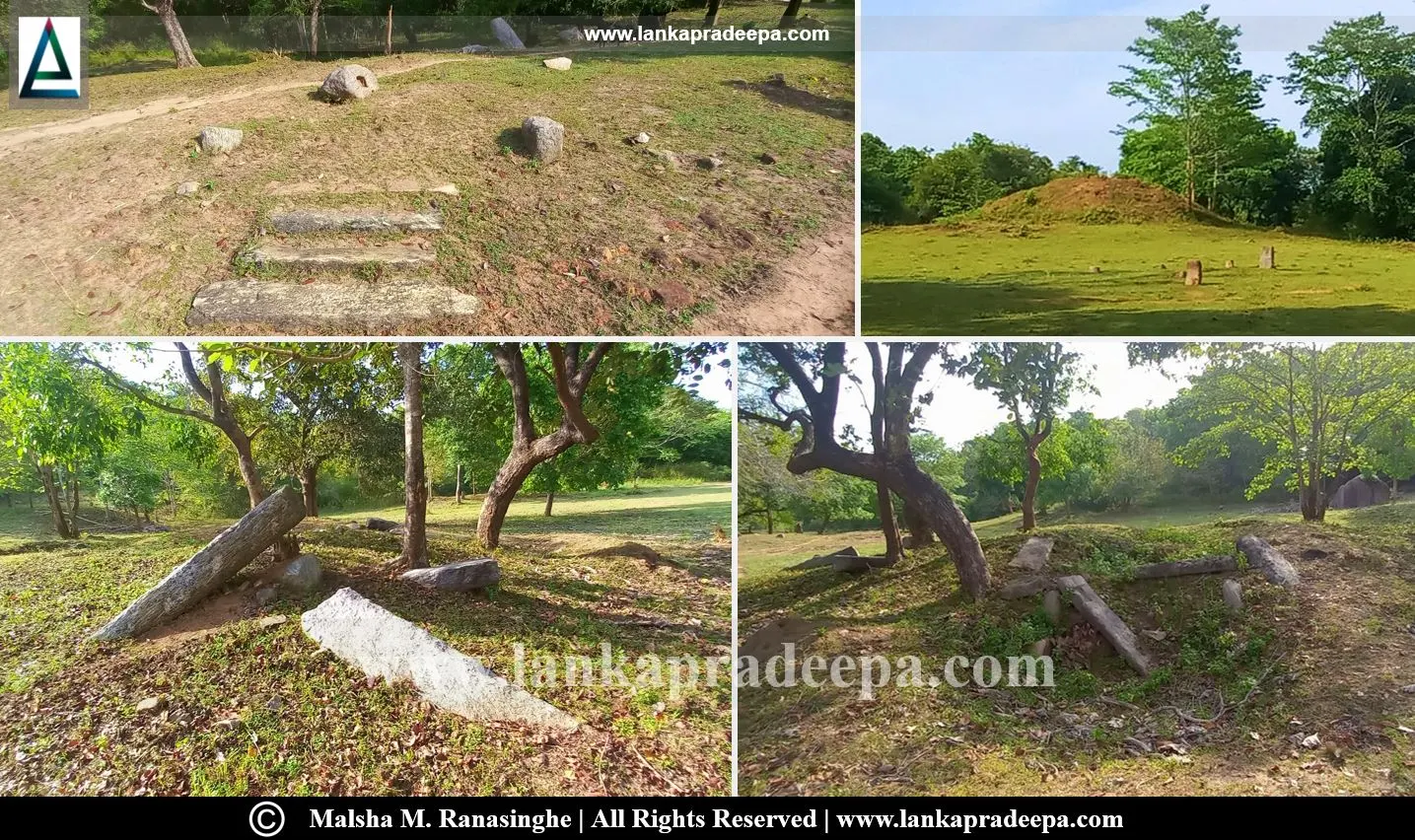
|
The Asanaghara (Stone seat house) at Pulukunawa |
Pulukunawa Raja Maha Viharaya, also known as Pulukunawa Archaeological Reserve (Sinhala: පුළුකුණාව රජමහා විහාරය), is a ruined Buddhiat monastery site situated in Eruvilporativu and Munmunai Pattu Divisional Secretariat Division of the Batticaloa District, Sri Lanka.
History
Nestled on on a small hillock at the boundary of the Gal-Oya Scheme near the Ampara-Mahiyangana Road, there are a large number of drip-ledged caves on the southern scarp of the hill. Many of these caves contain Early-Brahmi Inscriptions of the pre Christian era and they record the donation of the caves to Buddhist monks (Medhananda, 2003; Withanachchi, 2013). These cave inscriptions prove that Pulukunawa was a Buddhist monastery site during the early period of the Anuradhapura Kingdom.
Period: 3rd century B.C.-1st century A.D.
Script: Early Brahmi
Language: Old Sinhala
Transcription: Eka uthirika banaka pushadeva theraha manorame
Translation: Manoramya (cave) of the Bhanaka monk of Phussadeva Thera of Anguttara Nikaya.
References: Medhananda, 2003., p.248.
Scholars have dated certain other ruins at Pulukunawa site to the 6th, 7th and 8th centuries A.D. (Mathew, 1983).
The Ruins
The remains of a number of ancient structures are found on the flat area to the south of this hill. Among them are a Stupa vandalized by treasure hunters, some pillared structures and a dried pond (Mathew, 1983). The Asanaghara with an Asana (stone seat) of 14 ft. 2 inches by 6 ft. 2 inches is considered most important monument at the site (Mathew, 1983; Medhananda, 2003; Withanachchi, 2013). Evidence indicate that these structures at Pulukunawa are bounded by a Prakara (boundary wall) in ancient times.
Besides the structural ruins, rock paintings by indigenous people have also been found at this site (Kelum & Wickremasinghe, 2014)

Related Posts
Read Also
References
Books
1) Mathew, C.C., 1983. An Appeal to UNESCO to Safeguard and Preserve the Cultural Property in Sri Lanka Endangered by Racial Prejudice, Unlawful Occupation, Or Wilful Destruction. p.xviii.
2) Kelum, M.A., Wickremasinghe, H., 2014. Action Plan for Conservation & Sustainable Use of Palaeobiodiversity in Sri Lanka. Biodiversity Secretariat, Ministry of Environment & Renewable Energy. pp.68-70.
3) Medhananda, E., 2003. Pacheena passa - Uttara passa: Negenahira palata ha uturu palate Sinhala bauddha urumaya (In Sinhala). Dayawansa Jayakody & Company. Colombo. ISBN: 978-955-686-112-9. pp.242-251.
4) Withanachchi, C. R., 2013. Pauranika Sthana Saha Smaraka: Ampara Distrikkaya (In Sinhala). Department of Archaeology (Sri Lanka). ISBN: 955-9159-44-5. p.33.
Location Map
Dynamic Google Map
Attribution
To Whom
LankaPradeepa.com extends its gratitude to Malsha M. Ranasinghe for providing the necessary photographs required for this article. All the photos are published here with the permission of the author.

